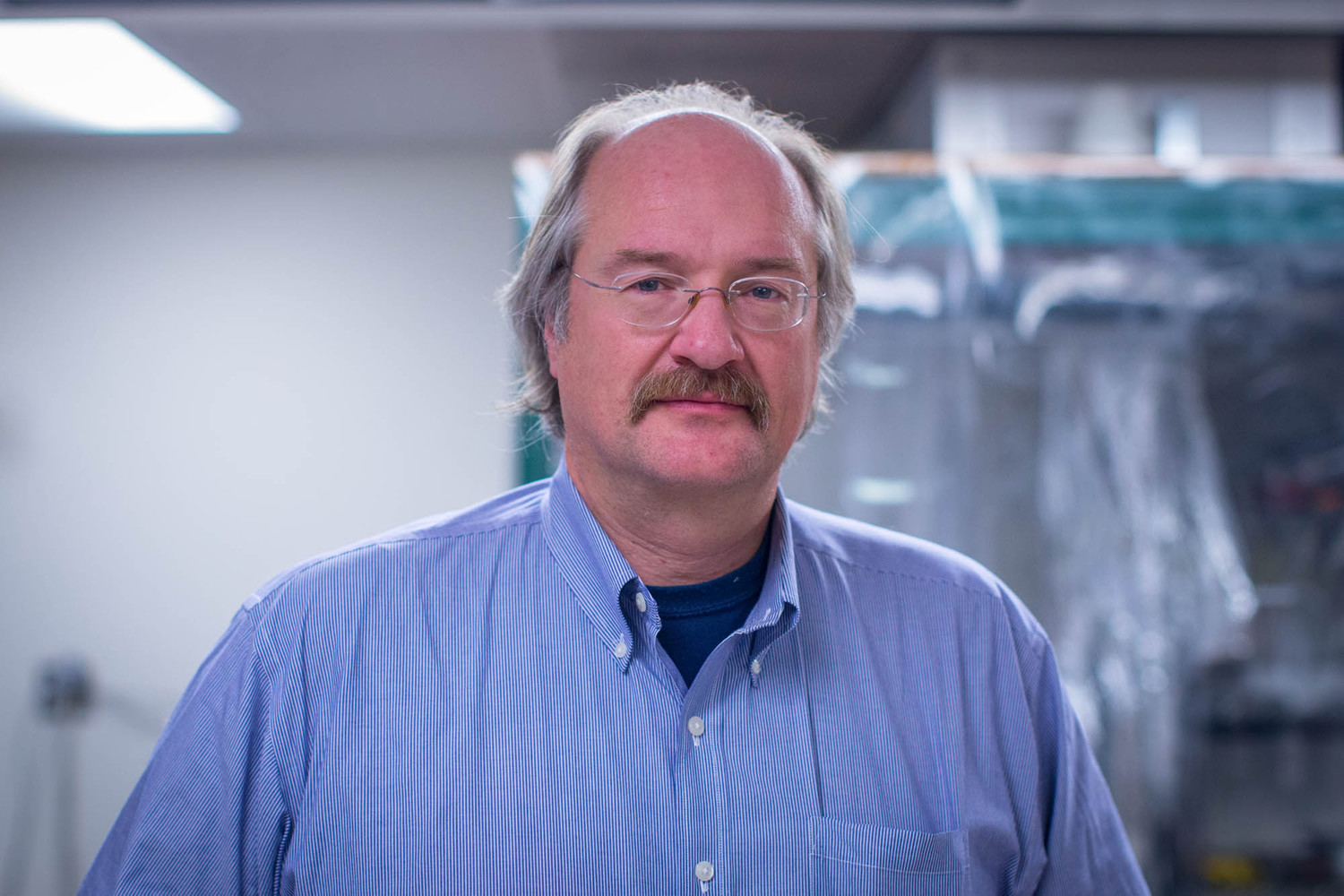A 4,000-pound astronomy instrument called APOGEE-2, built in the last two years at the University of Virginia, will soon be crated up and transported on an 8,000-mile, two-month journey to its new home at the Las Campanas Observatory in the northern Chilean desert.
The instrument – an infrared spectrograph designed to peer through cosmic dust to stars at the farthest reaches of our home galaxy, the Milky Way – will travel first by truck to California, then by container ship to Chile. It then will be trucked across the desert to Las Campanas and attached to a wide-field telescope, where it will take in “first light” in February.
“We know it works,” said John Wilson, the UVA instrument scientist who led the design, construction, assembly and testing of the spectrograph. “We’ve done enough fine-tuning and testing to be sure.”

John Wilson, instrument scientist.
Wilson is working with UVA astronomers Steven Majewski, who leads the project, and astronomy department chair Michael Skrutskie, who years ago established the UVA astronomical instrumentation lab that made the project possible. They assembled a team of astronomy department lab members and dozens of specialists from around the United States, seven Chilean universities and many other countries around the world, all working countless hours and long days babying the $6 million instrument to maturity.
APOGEE-2 is an infrared-sensitive spectrograph that will allow astronomers to examine – at wavelengths longer than optical light – the chemical composition and motions of hundreds of thousands of stars in the southern Milky Way, most of them cloaked by interstellar dust and difficult or impossible to observe from the Northern Hemisphere.

Astronomer Steven Majewski
The instrument will serve as a complement to APOGEE-1, a similar apparatus located in New Mexico, also built by the UVA team, and now in successful operation for five years.
“APOGEE-2, along with APOGEE-1, will allow us to view the full Milky Way from the Northern and Southern Hemispheres, filling in current gaps in visibility,” Wilson said. “The full project is providing insights to how our galaxy formed and is evolving, and by implication how other galaxies came together.

“The project also, in conjunction with other telescopes and instruments, is helping astronomers identify and characterize planets beyond our solar system, orbiting stars across the galaxy.”
APOGEE-2 will make observations well into the 2020s, Wilson said, gathering enough data to keep astronomers busy for decades.
The Alfred P. Sloan Foundation and an international collaboration of dozens of research universities, including UVA, contributed to the construction of the instrument and its operation. A recent grant from the UVA Center for Global Inquiry and Innovation helped facilitate the exchange of engineers and scientists to and from Chile to build APOGEE-2 and set up the infrastructure at Las Campanas to accommodate the spectrograph.
Media Contact
Article Information
November 16, 2016
/content/apogee-6-million-special-delivery-uva-chile

